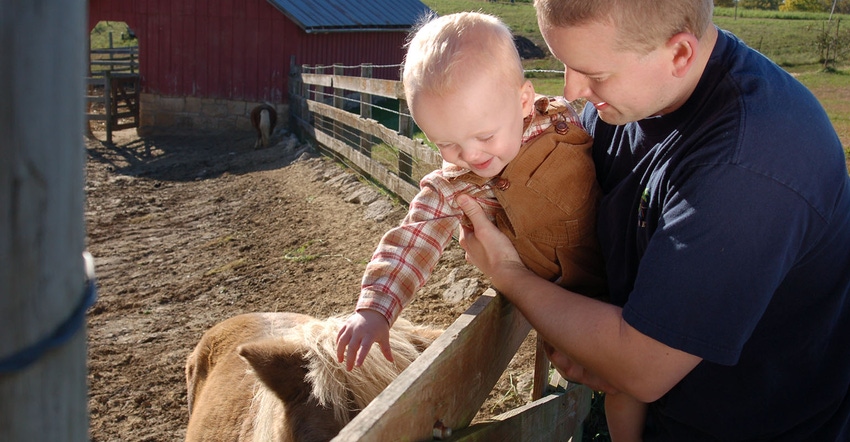January 11, 2019

In its latest Feed4Thought survey, Cargill found that twice as many young respondents, ages 18 – 34, in the U.S. and China reported knowing a livestock or seafood farmer compared to those older than 55—with similar trends in Mexico and France. And while 81% of 18-to-34-year-old Chinese participants said they have visited a livestock or seafood farm during their lifetime, only 50% of older survey respondents had. Young respondents in every country surveyed were more likely to have visited a farm than those over 55, despite the fact that, globally, there are fewer farmers to know or visit today than there were a generation ago.
Generation Y (born between the early 1980s and about 2000) is also acting on what they learn about farming practices. Almost three times as many Gen Y participants (52%) said they had changed their eating habits for sustainability reasons in the past year versus older U.S. respondents (19%). Mexico, France and China showed a similar age correlation—with 80% of young Chinese reporting changes. Having kids at home made participants in all four sample countries more likely to make values-based changes.
“We know people increasingly care about animal welfare, the healthfulness of foods and sustainability,” said Marina Crocker, head of Cargill Animal Nutrition market insights. “By pairing Cargill’s understanding of what our customers need with state-of-the-art analytics about what people want, we can anticipate and serve emerging consumer expectations in the solutions we provide our customers.”
This could mean anything from using blockchain to link U.S. consumers with the family farmer who raised the Honeysuckle White turkey they purchased to implementing full traceability in Cargill’s cocoa supply chains by 2030 as part of Cargill’s Cocoa Promise. It could be running a sustainable beef pilot in Canada to connect customers with certified products or helping farmers improve cows’ productivity, sustainability and well-being by using Cainthus facial recognition technology to monitor individual feeding, drinking and activity.
“The digital revolution has arrived in agriculture,” says Scott Ainslie, vice president and group director for Cargill’s animal nutrition premix business. “This will offer our customers a completely different way of making decisions and marketing their products. For example, they could use real-time data collected from on-farm sensors to inform nutritional programs, detect heat in dairy cows or determine the best harvest date for pigs and broilers. All this improves the health, well-being and productivity of their animals.”
More than 80% of survey respondents said the way an animal is raised is important, and almost half them were willing to pay more as a result. Chinese survey participants (59%) were the most open to paying a premium based on factors such as animal feed and housing; Americans (31%) the least. But “Generation Yum” respondents in the U.S., as well as their Chinese contemporaries, were more willing than their grandparents to pay for their preferred practices. Generational shifts aside, there was one thing participants of almost every age, gender, income bracket, household size and nationality agreed on: The top responsibility of a livestock or seafood farmer, according to respondents of this global research, was producing safe food for consumers.
Source: Cargill, which is solely responsible for the information provided and is wholly owned by the source. Informa Business Media and all its subsidiaries are not responsible for any of the content contained in this information asset.
You May Also Like




